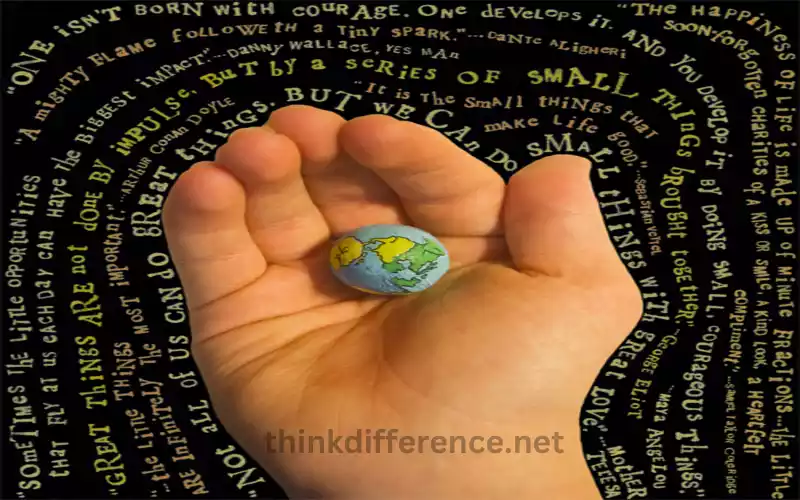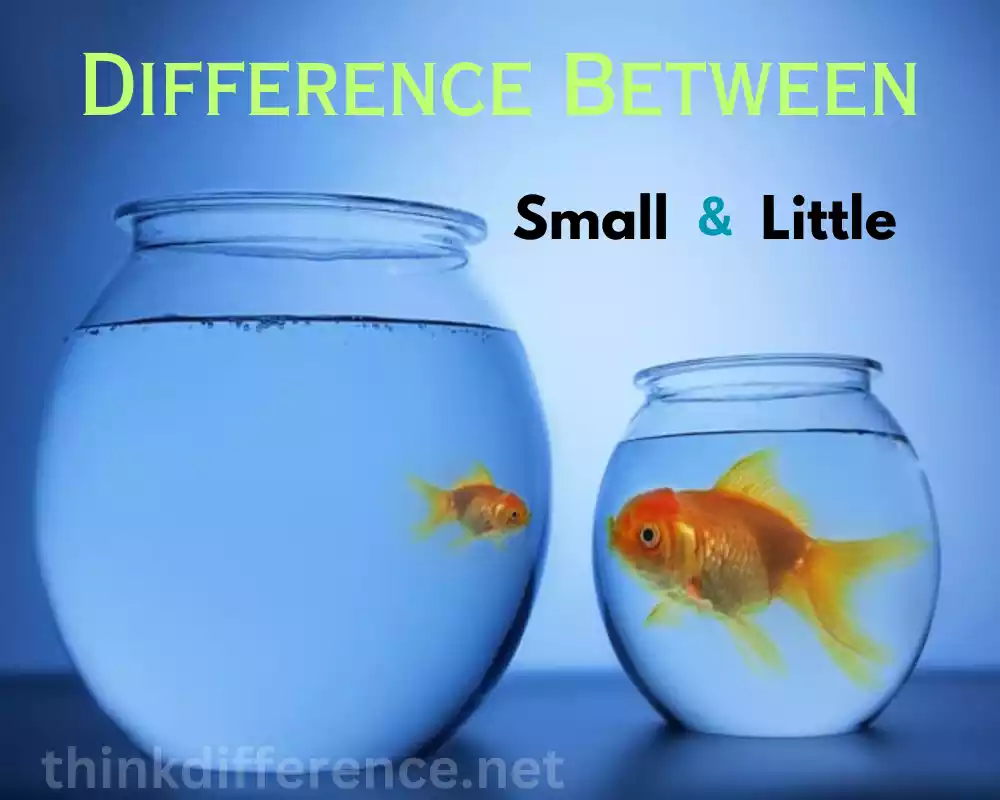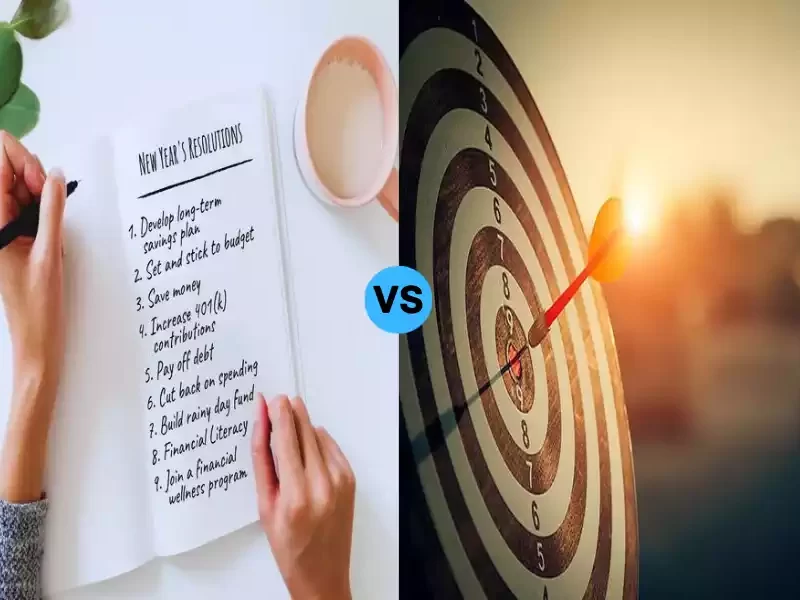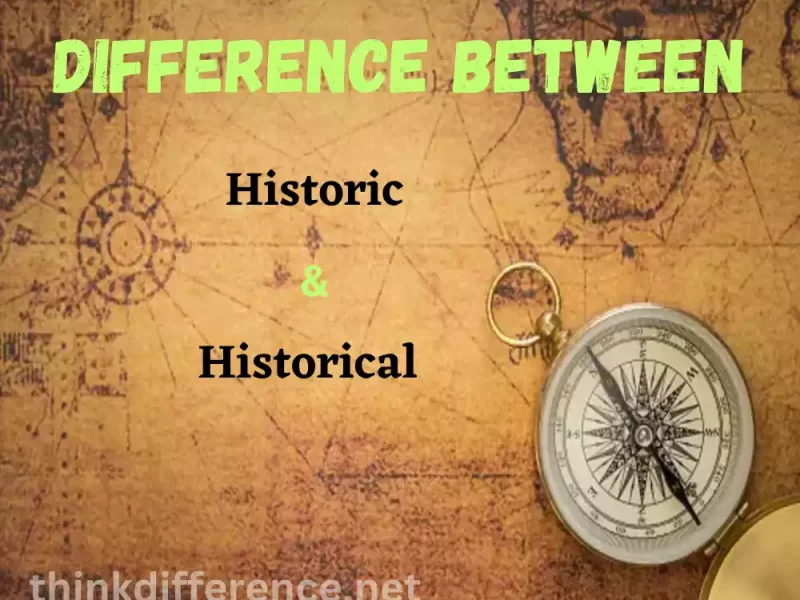Small and Little are often confused, they each possess distinct meanings within English language. Knowing these distinctions between little and small helps effectively communicate clearly. In this article we’ll look into all meanings associated with both terms as well as usage examples to clarify them further.
What Does “Small” Mean?
“Small” is an adjective that refers to objects of small dimensions or size; such as things, concepts or objects which appear small relative to others. The criteria or measures used to measure what constitutes small may change depending on its use in context.

“Small” in regards to dimensions and size refers to anything noticeable smaller than normal or expected. An object such as a home would likely contain less rooms with smaller footprints compared to their larger counterparts in its area.
“Small” can also be used to refer to the size or amount of something. “Small” implies an item has only limited quantities in relation to an event or situation – for instance a smaller company might be smaller in terms of both size or revenues than bigger competitors.
“Small” can also be applied figuratively and verbally; “small talk” typically serves to create buzz or engage in casual social interactions while “small-scale projects” typically require less participants or resources in comparison with larger initiatives.
Remembering the term “small” also allows us to evaluate its size within context – for instance when comparing two objects; or “smallest” when discussing all available choices as being of smaller sizes than another choice.
“Small” refers to items or processes with limited dimensions, size or scope whose meaning varies based on context.
What Does “Little” Mean?
“Little” is typically an adjective which refers to something being small or being miniature in size; this could also apply in different contexts depending on its use. Depending on its context within an exchange between parties involved it could refer to anything from being dwarfish in stature all the way through to meaning something entirely different altogether.
“Little” refers to spaces or objects which are significantly smaller than usual or expected, perhaps creating the feeling of compactness. An example would be an individual with small stature who happens to also be young – for instance a tiny puppy would highlight both this trait.
“Little” conveys more than size; it conveys comfort as well. Typically used when discussing young animals and children to express love, care or security – for instance referring to someone as “my little one” or their pet with terms like “my little buddy”. Such references highlight closeness in relationships while underscoring affection between both parties involved.
Little can refer to an absence or lack of significance, while “small” could refer to its small amount or significance. When someone claims they’re “short on time”, this indicates limited available working hours. Conversely referring to minor issues as insignificant may imply they don’t compare favorably when placed alongside larger or more pressing problems.
“Little” can also be employed in idiomatic phrases to refer to slow progress towards reaching goals or gradual steps taken over time, while using phrases such as “a little bird told me” for any source that remains unknown or hidden is commonplace.
Simply, “little” is an adjective used to refer to something of smaller dimensions. It could also denote affection or insignificance depending on context. Its definition goes far beyond physical dimensions to encompass emotional, interpersonal or qualitative considerations as well.
Importance of understanding the difference Small and Little
Understanding the difference between “small” and “little” is key for effective communications and precise expression.
Here are just a few reasons why being aware of that distinction is vital:
- Clarity of Meaning: Using the appropriate term ensures that your message is clearly conveyed. By understanding the nuances between “small” and “little,” you can accurately describe the size, significance or scarcity of objects, things or concepts.
- Contextual Appropriateness: Each term has its own connotations and associations. By using the correct word, you can capture the intended meaning within a given context. This helps avoid confusion or misinterpretation, ensuring that your message is accurately understood.
- Expressing Emotion or Affection: “Little” often carries a sense of endearment or fondness when used to describe young children, animals or beloved objects. Recognizing this emotional nuance allows for more heartfelt and affectionate communication.
- Precision in Descriptions: While both terms generally refer to smallness, understanding their specific usage allows for more precise descriptions. “Small” focuses on relative size within a group, while “little” implies a small size in an absolute sense. This differentiation enables clearer and more specific communication.
- Cultural and Linguistic Competence: Knowledge of the distinction between “small” and “little” demonstrates language proficiency and cultural awareness. It showcases your understanding of subtle linguistic variations and can help you navigate different contexts effectively.
- Expanded Vocabulary: Recognizing the differences between similar words expands your vocabulary and language skills. It allows you to choose the most fitting and accurate term, enhancing your ability to express yourself fluently and precisely.
By understanding the difference between “small” and “little,” you can communicate more effectively, express emotions appropriately and convey your intended meaning with precision and clarity.
Characteristics and Usage of Small
- Size and Dimensions: “Small” refers to something that is limited in size or dimensions. It suggests that the object or thing is noticeably smaller in comparison to others. The specific measurements or criteria for what is considered small can vary depending on the context in which the term is used.
- Scope and Quantity: In addition to physical size, “small” can also describe the scope or quantity of something. It indicates that there is a limited extent or capacity in relation to a particular context or category. An SMB may employ fewer employees or have lower revenue than larger corporations.
- Comparative and Superlative Forms: “Small” has comparative and superlative forms that allow for the comparison of sizes within a group. “Smaller” and “smallest” refer respectively to two objects whose sizes differ by an orderly comparison while “smallest” indicates which option has the smallest dimensions among available alternatives.
- Expressions and Idiomatic Usage: “Small” is commonly used in expressions and idioms. For instance, “small talk” refers to casual or trivial conversation, often used to break the ice or engage in light social interaction. Similarly, “small-scale” projects refer to those that are of limited scope or size, typically involving fewer resources or participants compared to larger endeavors.
- Contextual Usage: The usage of “small” depends on the context in which it is employed. It is important to consider the specific object, concept or situation being described to determine if “small” accurately captures its limited size or capacity.
“Small” refers to something with limited dimensions or size in relation to physical objects, projects or items. It is important to consider the context and comparative aspects to use the term appropriately and convey the intended meaning effectively.
Characteristics and Usage of Little
- Size and Dimensions: “Little” generally describes something as being small in size, often suggesting a sense of being tiny or minuscule. It emphasizes that the object or thing is noticeably smaller than what is considered average or expected.
- Endearment and Familiarity: One of the key characteristics that define “little” is their ability to convey affectionate or familiar sentiment. It is often used to describe young children or animals, expressing affection, care or a sense of protectiveness. Saying, for instance, “my sister” or calling an animal my little buddy indicates an affectionate and intimate bond between us.
- Scarcity or Insignificance: In addition to physical size, “little” can also imply scarcity or insignificance. It may be used to describe a small quantity or importance of something. An indication of their lack of time to work would be when someone claims they’re busy, which indicates a small window of opportunity in which to complete projects. Similarly, referring to a little problem means it is relatively minor or of lesser importance compared to larger or more significant issues.
- Expressions and Idiomatic Usage: “Little” is often used in expressions and idioms to convey specific meanings. For example, the phrase “little by little” implies gradual progress or incremental steps toward a goal. The saying “a little bird told me” is used when the source of information is unknown or purposely kept anonymous.
- Contextual Usage: The usage of “little” depends on the context and the specific object or situation being described. It is important to consider the emotional or qualitative aspects associated with “little” to accurately convey the intended meaning.
“Little” can refer to something small in size but also describes an object, idea, word or thought which lacks significance or scarce resources. It can describe physical dimensions, express affection or familiarity and convey a sense of limited quantity or importance. Understanding its characteristics and appropriate usage allows for precise and nuanced communication.
Differences of Small and Little
The major distinctions between “small” and “little” can be summarized as follows:
- Size and Dimensions: “Small” refers to something that is relatively diminutive or limited in size compared to others. It implies a smaller size in comparison to what is considered average or expected. “Little” also describes something as small but it often suggests a sense of being tiny or minuscule. It emphasizes a noticeably smaller size, often conveying a sense of endearment or cuteness.
- Comparative Usage: “Small” has comparative and superlative forms, allowing for the comparison of sizes within a group. It can be used to describe something as “smaller” when comparing two objects or as the “smallest” when referring to the object with the least size among multiple options. In contrast, “little” does not have distinct comparative forms. It is used to describe something small without explicitly comparing it to other objects.
- Emotional Connotation: “Little” often carries a sense of endearment, familiarity or affection. It is frequently used to describe young children, animals or beloved objects, expressing a nurturing or caring attitude. In contrast, “small” does not inherently carry the same emotional connotation and is generally used to describe size or quantity without emphasizing endearment or affection.
- Scarcity and Insignificance: While both terms can describe something small in terms of quantity or importance, “little” more explicitly conveys scarcity or insignificance. It can be used to indicate a small amount, limited significance or a minor issue. “Small,” is not as strongly associated with scarcity or insignificance and can describe a range of sizes or quantities.
- Usage in Idiomatic Expressions: “Small” and “little” are words commonly found in idiomatic language expressions. The specific expressions associated with each term may differ. For example, “small talk” is a common idiomatic expression that refers to casual or trivial conversation. In contrast, “little by little” is an expression that signifies gradual progress or incremental steps toward a goal.
Understanding these differences allows for more precise and accurate usage of “small” and “little” in different contexts, facilitating effective communication and conveying the intended meaning.
Common Phrases with “Small” and “Little”

Common Phrases with “Small”:
- Small talk: Casual or trivial conversation used to break the ice or engage in light social interaction.
Example: “We engaged in small talk while waiting for the meeting to start.” - Small-scale: Referring to projects or endeavors that are of limited scope or size, typically involving fewer resources or participants.
Example: “They decided to start with a small-scale pilot program before expanding it further.” - Small fry: Referring to someone or something of little importance or influence.
Example: “Compared to the CEO, I’m just a small fry in this company.” - Small victory: A modest or minor achievement or success.
Example: “Finishing the first chapter of my book was a small victory for me.” - Small-minded: Having narrow or limited perspectives, lacking open-mindedness.
Example: “His small-mindedness prevented him from considering alternative viewpoints.”
Common Phrases with “Little”:
- Little by little: Gradually or steadily, in small increments.
Example: “With consistent effort, we made progress little by little.” - A little bird told me: Used to attribute information to an anonymous or unidentified source.
Example: “I heard that you’re getting a promotion, but a little bird told me, so it might not be accurate.” - A little goes a long way: Even a small amount can have a significant impact or make a difference.
Example: “With proper budgeting, saving a little money each month can go a long way.” - Little black dress: A classic and versatile black dress, typically simple and elegant in style.
Example: “She looked stunning in her little black dress at the cocktail party.” - Little rascal: An affectionate term used to describe a mischievous or playful person, often a child.
Example: “My little rascal always keeps me on my toes with his antics.”
These phrases demonstrate the usage of “small” and “little” in various idiomatic expressions, showcasing their different connotations and contexts.
The Importance of Context
Context is a vital aspect of communication, it provides essential background and information necessary for accurate interpretation and comprehension of phrases, words or statements.
Here are several reasons why context matters so much:
-
- Meaning and Interpretation: Words or phrases may have different interpretations depending on their usage context. The same word can have different interpretations or connotations based on the surrounding information. For example, the word “bank” can refer to a financial institution or the side of a river and the context helps determine the intended meaning.
- Precision and Clarity: Context helps to convey the precise message and avoid ambiguity. It provides additional details or clarifications that narrow down the possible interpretations. By considering the context, one can choose the most appropriate words or phrases to accurately express their intended meaning.
- Nuance and Tone: Context provides insights into the tone, intention, or emotional nuances behind a statement. It helps to understand the speaker’s attitude, perspective or emphasis, which can significantly impact the overall message. An offensive comment, for example, can only be understood when considered within its proper context.
- Cultural and Social Factors: Context helps in understanding language and communication norms within specific cultures or social groups. Different communities may have their own vocabulary, idioms or expressions that make sense within their context but may be challenging to interpret without that background knowledge.
- Effective Communication: By considering the context, speakers can adapt their language and communication style to suit the audience or situation. They can tailor their message to be more relevant, relatable and understandable, enhancing the overall effectiveness of communication.
- Resolving Ambiguity and Misunderstandings: Contextual information can help clarify ambiguous statements or resolve misunderstandings. When there is confusion or multiple possible interpretations, referring back to the context can help identify the intended meaning and resolve any confusion.
Understanding the importance of context is essential for accurate interpretation, effective communication and avoiding misunderstandings. It provides vital cues, details and background information that help derive the intended meaning behind words, phrases or expressions. By considering the context, we can ensure clearer and more precise communication.
Synonyms and Antonyms
Synonyms for “small”:
- Little
- Tiny
- Miniature
- Petite
- Compact
- Mini
- Diminutive
- Lilliputian
- Minor
- Narrow
Antonyms for “small”:
- Large
- Big
- Huge
- Spacious
- Vast
- Massive
- Substantial
- Generous
- Extensive
- Gigantic
Synonyms for “little”:
- Small
- Tiny
- Minuscule
- Petite
- Diminutive
- Lilliputian
- Miniature
- Wee
- Slight
- Microscopic
Antonyms for “little”:
- Big
- Large
- Huge
- Enormous
- Substantial
- Massive
- Significant
- Considerable
- Ample
- Vast
These terms may be used interchangeably and as synonyms/antonyms to “small” and “little,” with their application depending on the context in which they are applied.
Tips for Using “Small” and “Little” Correctly
To effectively utilize small and diminutive objects, take note of these suggestions:
- Understand the Distinction: Recognize the subtle differences between “small” and “little” in terms of size, emotional connotation and contextual usage. This understanding will help you choose the appropriate word for your intended meaning.
- Consider Size and Comparison: When describing physical dimensions, use “small” to denote something smaller in size compared to others. Use “little” to emphasize a significantly smaller or more diminutive size, often conveying endearment or cuteness.
- Pay Attention to Context: Context is key in determining the appropriate usage. Consider the overall context, subject matter, and intended meaning of your statement. This will help you select the right word that aligns with the specific context and conveys your message accurately.
- Express Emotional Nuances: If you want to convey affection or endearment, consider using “little.” It can be used to describe young children, pets, or objects you have a fondness for. “Small,” is more neutral in terms of emotional connotation.
- Be Mindful of Idiomatic Expressions: Both “small” and “little” are used in various idiomatic expressions. Familiarize yourself with these expressions to use them appropriately and effectively in conversation or writing.
- Use Comparative Forms: If you want to make comparisons, use the comparative forms of “small” (smaller) and “little” (less commonly used as a comparative form). This allows for a clearer comparison between sizes or quantities.
- Clarify Quantity or Importance: Use “little” when emphasizing scarcity or insignificance. It can be used to describe a small quantity or a minor issue. “Small” can also be used in these contexts but it is not as strongly associated with scarcity or insignificance.
- Proofread and Revise: Before finalizing your written work or verbal communication, proofread and revise to ensure you have used “small” and “little” correctly. Double-check that the word you have chosen aligns with the intended meaning and effectively conveys your message.
By following these guidelines and tips, you can increase the use of small words like “small” and “little”, as well as ensure your message remains clear, precise and pertinent to its context.
Summary
The impact of “small” and “little” in our lives is profound. From personal growth to relationships and beyond, these seemingly insignificant elements hold tremendous power. Embracing a “small” and “little” mindset allows us to appreciate life’s simple joys and make a positive difference in the lives of others.



